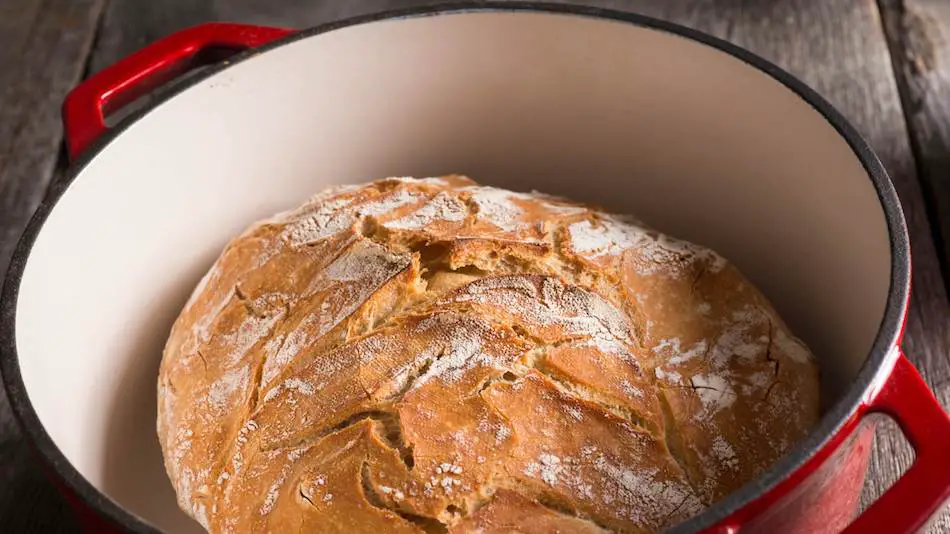
Baking bread in a Dutch oven is a time-honored tradition that yields delicious, crusty loaves with a tender, soft interior. The Dutch oven, with its heavy, tight-fitting lid, creates a moist, steamy environment that is ideal for baking bread. This method is particularly well-suited for baking Italian bread, with its characteristic crispy crust and airy crumb. In this article, we will explore the history and techniques of baking Italian bread in a Dutch oven, and provide step-by-step instructions for achieving delicious results at home. Whether you are a seasoned baker or a novice, this method is sure to produce beautiful loaves of Italian bread that are full of flavor and texture.
- Preheat your dutch oven by placing it in the oven at 450 degrees Fahrenheit for about 30 minutes. Once heated, carefully remove the dutch oven from the oven and place the dough inside. Return the dutch oven to the oven and bake for 30-35 minutes, or until the bread is golden brown on the outside and sounds hollow when tapped.
- Another option is to preheat the dutch oven on the stovetop over medium-high heat. Once heated, carefully place the dough inside and cover the dutch oven with the lid. Cook the bread for a few minutes on each side, or until it is golden brown and sounds hollow when tapped.
- If you want to add an extra crispy crust to your bread, try preheating the dutch oven as described in method 1, but instead of placing the dough directly in the dutch oven, place it on a piece of parchment paper. Once the bread has baked for about 20 minutes, carefully remove the dutch oven from the oven and carefully transfer the bread (still on the parchment paper) into the dutch oven. Return the dutch oven to the oven and continue baking for an additional 10-15 minutes, or until the bread is golden brown and sounds hollow when tapped.
Step-By-Step Recipe
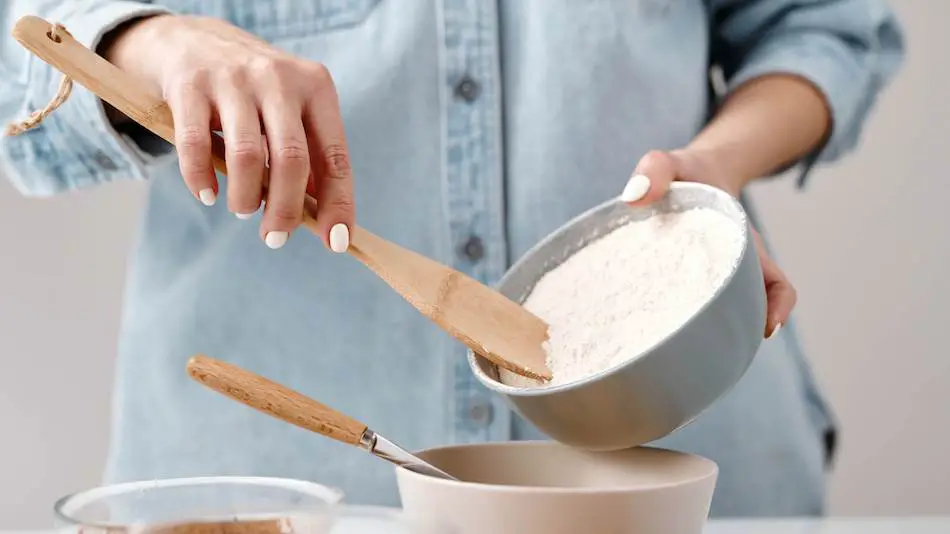
- In a large mixing bowl, combine 3 cups of all-purpose flour, 1 teaspoon of salt, 1 teaspoon of active dry yeast, and 1 tablespoon of dried Italian herb seasoning. Stir until well combined.
- In a separate bowl, combine 1 cup of warm water, 1 tablespoon of olive oil, and 1 tablespoon of honey. Stir until the honey has dissolved.
- Add the wet ingredients to the dry ingredients and stir until a dough forms. Knead the dough for about 5 minutes, or until it becomes smooth and elastic.
- Place the dough in a lightly oiled bowl and cover with a damp cloth. Let the dough rise in a warm place for about 1 hour, or until it has doubled in size.
- Preheat your dutch oven by placing it in the oven at 450 degrees Fahrenheit for about 30 minutes.
- Once the dough has risen, carefully remove the dutch oven from the oven and place the dough inside. Return the dutch oven to the oven and bake for 30-35 minutes, or until the bread is golden brown on the outside and sounds hollow when tapped.
- Once the bread is done baking, carefully remove it from the dutch oven and let it cool on a wire rack. Once it has cooled, slice and serve the bread warm.
Troubleshooting – Potential Problems
There are a few potential problems you might encounter when baking Italian bread in a dutch oven, including:
- The dough not rising
- The bread not cooking evenly
- The bread sticking to the dutch oven
By following the recipe instructions carefully and avoiding these potential problems, you should be able to successfully bake Italian bread in a dutch oven.
The Dough Not Rising
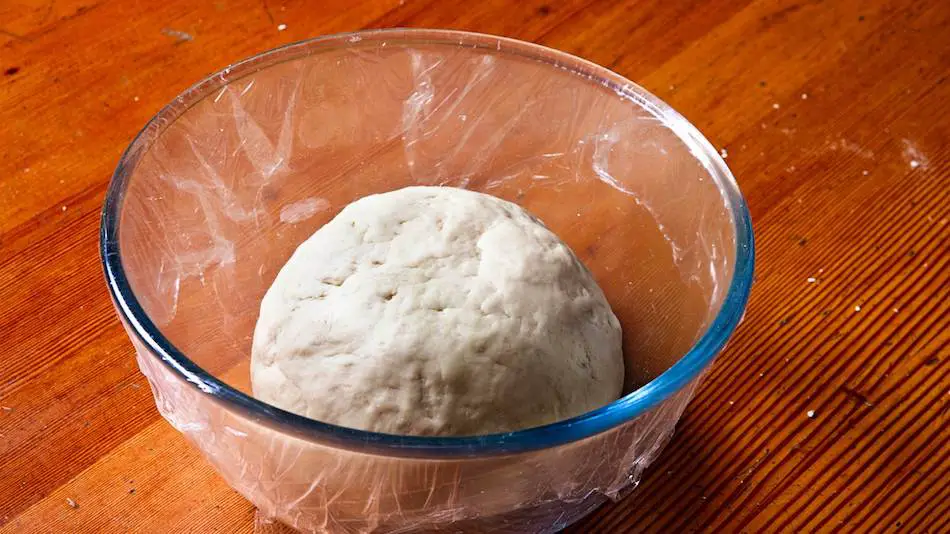
If the dough doesn’t rise properly, it can result in a dense and heavy loaf of bread. There are several potential causes of this problem, including:
- The yeast is not fresh or active: To ensure that the dough rises properly, it is important to use fresh and active dry yeast. If the yeast is old or inactive, it may not be able to cause the dough to rise properly.
- The water is not warm enough: To activate the yeast, the water used to make the dough must be warm (between 110 and 115 degrees Fahrenheit). If the water is too cold, it may not be able to activate the yeast and cause the dough to rise.
- The dough is not placed in a warm and draft-free environment: To rise properly, the dough must be placed in a warm and draft-free environment. If the dough is placed in a cold or drafty area, it may not rise properly.
To avoid these problems and ensure that the dough rises properly when baking Italian bread in a dutch oven, make sure you use fresh and active dry yeast, use warm water to make the dough, and let the dough rise in a warm and draft-free environment. By following these steps, you should be able to bake Italian bread with a perfectly risen and fluffy dough.
The Bread Cooks Uneven
If the bread is not cooking evenly when making Italian bread, it can be due to several factors, including:
- The dutch oven is not preheated properly: To ensure that the bread cooks evenly, it is important to preheat the dutch oven according to the recipe instructions. If the dutch oven is not preheated properly, the bread may not cook evenly.
- The dough is placed unevenly in the dutch oven: To ensure even cooking, it is important to place the dough carefully in the dutch oven. If the dough is placed unevenly, it may not cook evenly.
- The dutch oven is not big enough for the dough: If the dutch oven is too small for the dough, it may not be able to cook evenly. To avoid this problem, make sure you use a dutch oven that is large enough to accommodate the dough.
To avoid these problems and ensure that your Italian bread cooks evenly, make sure you preheat the dutch oven properly, place the dough carefully in the dutch oven, and use a dutch oven that is large enough for the dough. By following these steps, you should be able to bake Italian bread with an evenly cooked and golden brown crust.
The Bread Sticks To The Dutch Oven
If the bread sticks to the dutch oven when making Italian bread, it can be frustrating and difficult to remove. To avoid this problem and ensure that your bread comes out of the dutch oven easily, there are a few steps you can take, including:
- Grease the dutch oven lightly: Before adding the dough to the dutch oven, make sure you lightly grease the dutch oven with cooking spray or oil. This will help to prevent the bread from sticking to the dutch oven.
- Use parchment paper: Another way to prevent the bread from sticking to the dutch oven is to place the dough on a piece of parchment paper before adding it to the dutch oven. This will create a barrier between the bread and the dutch oven, making it easier to remove the bread once it is cooked.
- Let the bread cool slightly before removing it from the dutch oven: If the bread is still hot when you try to remove it from the dutch oven, it may be more likely to stick. To avoid this, let the bread cool slightly before removing it from the dutch oven. This will give the bread time to firm up and make it easier to remove.
By following these steps, you should be able to prevent the bread from sticking to the dutch oven when making Italian bread. This will make it easier to remove the bread from the dutch oven and ensure that it comes out perfectly every time.
Dutch Ovens
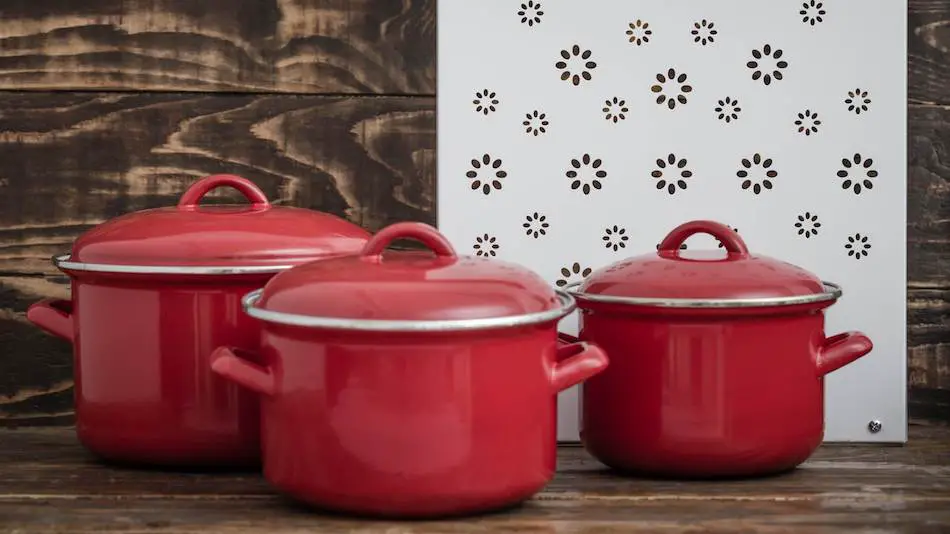
There are several reasons why dutch ovens are a great option for baking bread, including:
- They retain heat well: Dutch ovens are made from heavy materials that retain heat well, making them ideal for baking bread. This allows the bread to rise and bake evenly, resulting in a perfectly cooked loaf every time.
- They create a moist baking environment: When baking bread, it is important to create a moist environment to prevent the crust from becoming too hard and crunchy. The lid of a dutch oven traps steam inside, creating a moist environment that helps to keep the bread soft and fluffy.
- They are versatile: Dutch ovens are versatile cooking tools that can be used for a wide range of recipes, including stews, soups, and braises. This makes them a convenient and practical option for bakers who want to use the same cooking pot for multiple recipes.
- They are durable: Dutch ovens are made from heavy materials that are designed to last for many years. This makes them a long-lasting and durable option for bakers who want to invest in a high-quality cooking tool.
Overall, dutch ovens are a great option for baking bread because they retain heat well, create a moist baking environment, are versatile, and are durable. Whether you are a beginner baker or a seasoned pro, a dutch oven is a valuable tool to have in your kitchen.
There are several types of dutch ovens, including:
- Cast iron dutch ovens: These are the most common type of dutch oven and are made from heavy, thick-walled cast iron. They are durable and long-lasting, but can be heavy and difficult to handle.
- Enameled dutch ovens: These dutch ovens are made from cast iron that is coated with a layer of enamel. This makes them easier to clean and maintain, but they are not as durable as uncoated cast iron dutch ovens.
- Ceramic dutch ovens: These dutch ovens are made from ceramic materials and are often lighter and easier to handle than cast iron dutch ovens. However, they are not as durable and can be more easily damaged.
- Stainless steel dutch ovens: These dutch ovens are made from stainless steel and are often lightweight and easy to handle. However, they do not retain heat as well as cast iron dutch ovens and can be more expensive.
Overall, the type of dutch oven you choose will depend on your personal preferences and the specific needs of your recipe. Each type of dutch oven has its own unique characteristics and benefits, so it is important to choose the one that is best suited for your needs.
Italian Bread – A Short History
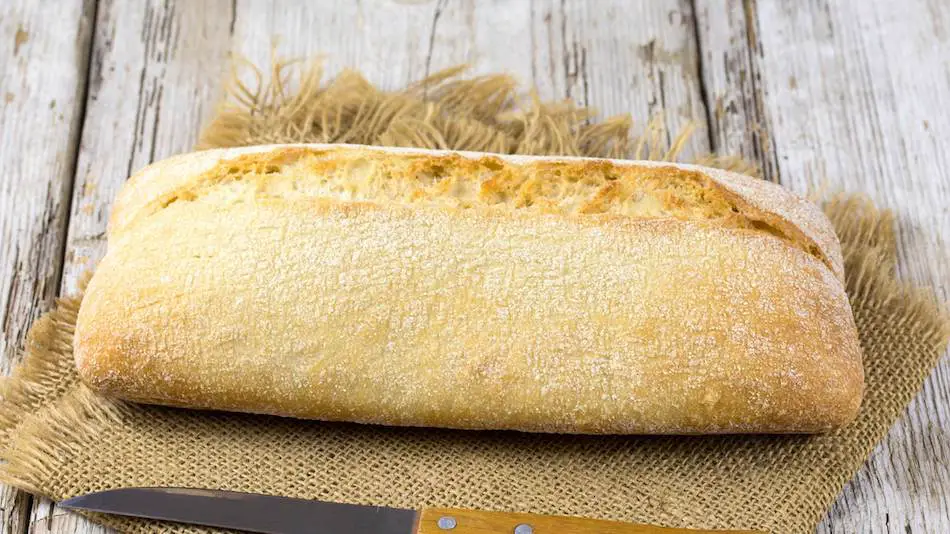
Italian bread, also known as “pane Italiano,” is a type of bread that originated in Italy and is commonly made with wheat flour, salt, yeast, and water. It is typically long and slender in shape, with a crisp crust and a soft, fluffy interior.
Italian bread has a long history, dating back to ancient Rome where it was an important part of the Roman diet. Over time, Italian bread has evolved and there are now many different variations and types of Italian bread, including ciabatta, focaccia, and pane sciocco (plain bread).
Italian bread is commonly used as a part of many Italian dishes, including sandwiches, bruschetta, and panzanella salad. It is also often served as a side with pasta dishes, soups, and stews.
Italian bread can be made in many different ways, including in a dutch oven, on a baking sheet, or in a bread machine. The exact method of making Italian bread will vary depending on the type of bread and the recipe used. However, the basic steps of making Italian bread typically involve mixing the ingredients together to form a dough, letting the dough rise, shaping the dough into the desired shape, and baking it until it is golden brown and crispy on the outside.
Overall, Italian bread is a delicious and versatile type of bread that has been enjoyed for centuries. Its rich history, varied uses, and many different variations make it a beloved part of Italian cuisine.

